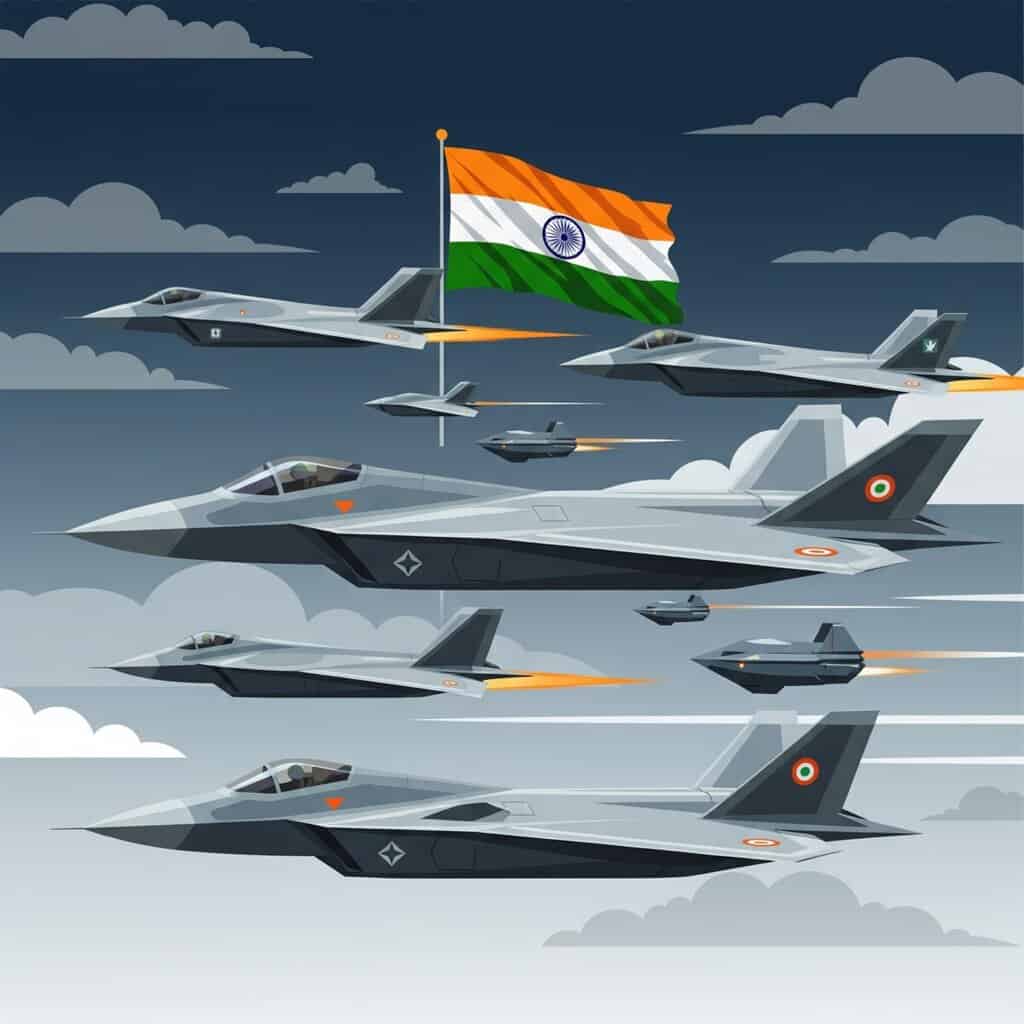India has just made a power move in the high-stakes world of military aviation—approving a brand-new stealth fighter program. This isn’t just another defense project; it’s a statement. With Pakistan flexing its own airpower and China lurking in the background, India is sending a clear message: We’re not playing defense anymore.
But let’s cut through the hype. What does this really mean? Will India actually pull off a homegrown stealth jet? And how will Pakistan and China react? Buckle up—we’re diving deep into the drama of South Asia’s aerial arms race.
Why Stealth Fighters Are a Game-Changer
Imagine playing a shooting game where one player is invisible. That’s essentially what stealth fighters bring to air combat. These jets are engineered to slip past enemy radars, striking before the opponent even knows they’re there. The U.S. has the F-35, China has the J-20, and Russia has the Su-57. Now, India wants its own.
But here’s the kicker—India isn’t just buying stealth jets off the shelf. It’s trying to build them. That’s a massive leap from importing fighters like the Rafale or Sukhoi-30MKI. If successful, this would put India in an elite league of nations with indigenous stealth capabilities.
The Pakistan Factor: Why Now?
Let’s be real—this announcement isn’t happening in a vacuum. Tensions between India and Pakistan are always simmering, but recent border clashes and Pakistan’s cozying up to China have Delhi on edge.
Pakistan’s Air Force is no pushover. It flies advanced JF-17 Thunder jets (co-developed with China) and might even get its hands on China’s J-31 stealth fighters down the line. India can’t afford to fall behind. If Pakistan gets stealth jets first, the balance of power in South Asia could tilt dangerously.
So, India’s move is both defensive and strategic. It’s not just about countering Pakistan—it’s about ensuring India stays two steps ahead.
Can India Actually Pull This Off?
Alright, let’s talk brass tacks. Building a stealth fighter isn’t like assembling a Lego set. Even the U.S. and China struggled for years (and spent billions) to get theirs right. India’s track record with homegrown fighters? Mixed, to say the least.
The Big Challenges
- Radar-Evading Tech – Stealth isn’t just about shape; it’s about special coatings and materials that absorb radar waves. India has dabbled in this, but mastering it is a whole different beast.
- Engine Troubles – India’s Tejas fighter still relies on a foreign engine. Developing a high-performance, stealth-compatible engine domestically? That’s a huge hurdle.
- Time & Money – The F-35 took over 20 years and cost a trillion dollars. India doesn’t have that kind of time—or unlimited cash.
The Silver Lining
India’s not starting from zero. The AMCA (Advanced Medium Combat Aircraft) program has been in the works for years, and lessons from the Tejas project could help avoid past mistakes. Plus, partnerships with countries like France or Israel could fast-track critical tech.
Still, experts say we shouldn’t expect an operational stealth fighter before 2035. That’s a long time in geopolitics—plenty of room for surprises.
How Will Pakistan and China Respond?
You think Pakistan’s just gonna sit back and watch? Not a chance. Here’s what might happen next:
- Pakistan Could Speed Up Its Own Stealth Plans – They might push China for early delivery of J-31s or even kickstart a joint stealth project.
- China Might Throw More Weight Behind Pakistan – More military aid, more tech sharing, maybe even stationing stealth jets near India’s border as a show of force.
- An Escalating Arms Race – More advanced jets mean more advanced missiles, radars, and countermeasures. The risk of accidental conflict goes up.
Bottom line: India’s move will force reactions, and not necessarily peaceful ones.
The Bigger Picture: A New Cold War in South Asia?
This isn’t just about jets. It’s about influence. China’s backing Pakistan, India’s leaning closer to the U.S. and Europe, and everyone’s arming up.
Think of it like a high-stakes poker game:
- India just went all-in with its stealth bet.
- Pakistan might call the bluff by upping its own hand.
- China is the silent dealer, stacking the deck in its favor.
The question isn’t just who wins—it’s how far this escalation goes before someone miscalculates.
Final Verdict: Bold Move, But Risky Road Ahead
India’s stealth fighter program is a gutsy play. If successful, it could redefine South Asia’s military balance. But the challenges are enormous, and the geopolitical fallout could be messy.
One thing’s certain: The skies over India and Pakistan just got a lot more dangerous.
FAQs
1. What makes a fighter jet “stealth”?
Stealth jets use special shapes, materials, and coatings to avoid radar detection. It’s like wearing an invisibility cloak—but for warplanes.
2. Does Pakistan have stealth fighters?
Not yet, but China’s J-31 could be an option for them in the future.
3. How long until India’s stealth fighter is ready?
Best-case scenario? 10-15 years. Realistically? Maybe longer, given past delays.
4. Will this make India’s Air Force stronger than China’s?
Unlikely soon. China already has operational stealth jets and a bigger defense budget. But it narrows the gap.
5. Could this lead to war?
Not necessarily, but an arms race increases the risk of accidents or miscalculations. Diplomacy will be key.


We want to hear your what you have to say